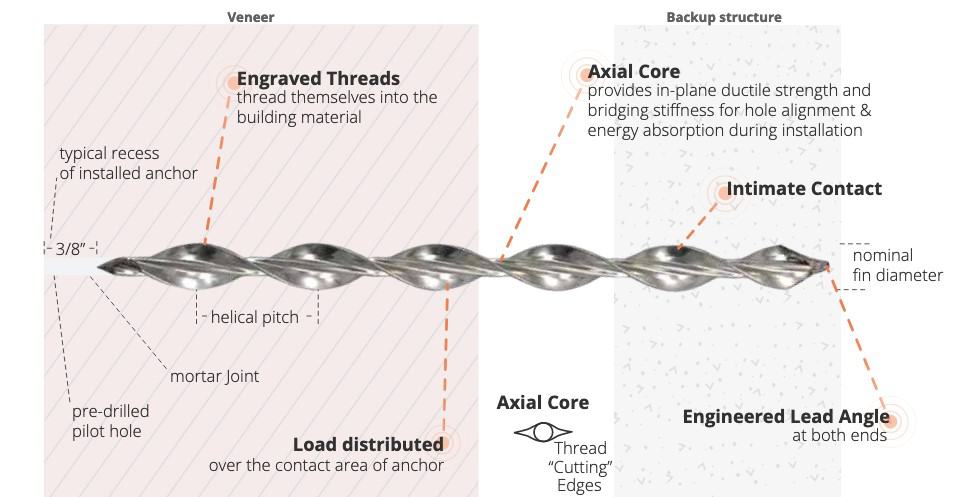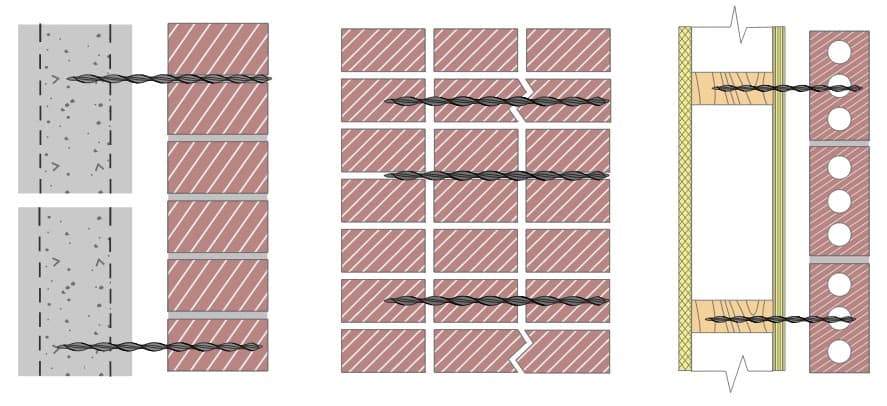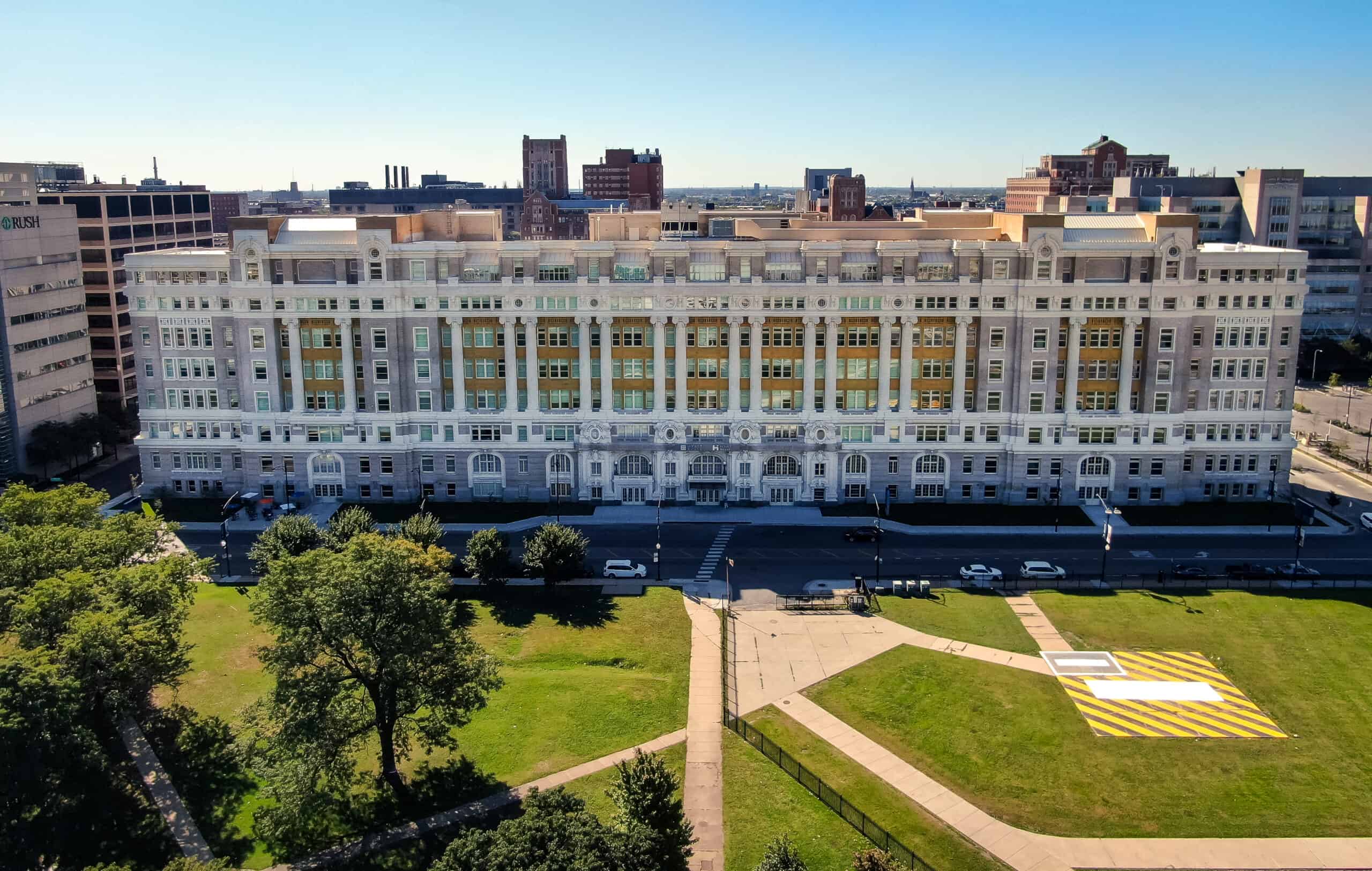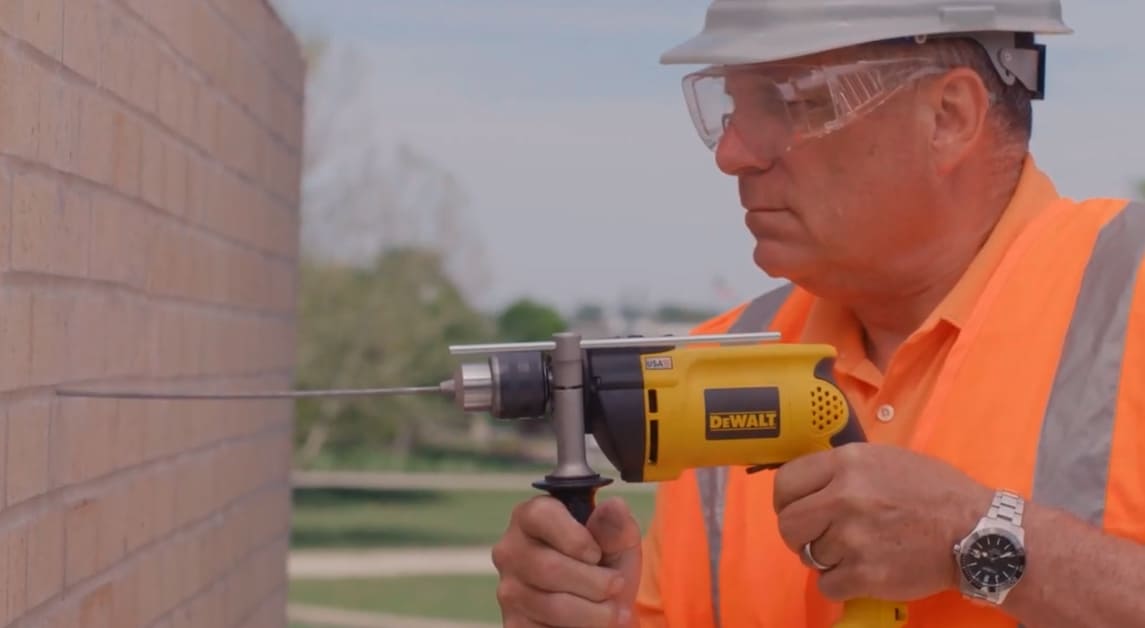Monumental historic buildings dot the city landscape and all too often, the toll of the years is visible on their brick or stone façade. The restoration of these outer walls represents a common challenge, as well as a major expense. The façade may require repairs for a wide variety of reasons including structural issues that cause bricks to move, the crumbling of lime-based mortar through age or, at times, even the use of inappropriate mortar.
Although it’s rare that the complete outer wall system needs to be replaced, owners or contractors new to historic restoration may be tempted to completely turn away from such a project because of the potential expense. They may also be unaware of an extremely effective solution that could save up to 95% of the cost of a complete strip and reclad —the use of stitch-ties, also known as helical ties or helical anchors.
Stitch-Ties
Rather than pull down exterior walls, or abandon a historic retrofit because it will be too expensive, stainless steel pins called stitch-ties are used to reattach existing masonry façades to backup structures. This method stabilizes veneers of brick, stone, masonry, or precast concrete that have missing or corroded wall ties.

Pre-1940 structures used lime-based mortar that over time, erodes and washes away, causing masonry to slump. Stitch-ties placed in the mortar joints represent another means to re-anchor the walls together so that they can be re-mortared, latching everything together again. This eliminates the need to peel veneer off a building and re-lay all the brick again, saving substantial time and money. The age of the building, the architectural facade and backup material and mortar joint thickness help in determining the overall length and diameter of the stitch-tie to be used.
How Stitch-Ties Work
Stitch-ties are typically installed using one anchor per 2 square feet of existing veneer. Solid masonry walls are often held together with wall hangers and wall ties ─ metal slats that stay in position between two bricks. Over time, the wall ties can wear out or fall. Stitch-ties re-anchor the bricks, recreating balance in old walls. Stitch-ties can be used to tie two to three layers of brick together, a stone wall to a concrete foundation, or even brick to a block foundation. These connections are made securely while also allowing normal thermal movements to occur.

Be Proactive
For owners of historic buildings, there’s no need to wait for exterior façade failure to consider using stitch-ties. A proactive approach should be considered to lock and hold everything together when restoring, repointing, waterproofing and otherwise repairing an aged building; stitch ties should be considered as part of that process.
PROSOCO retrofit ties stabilize veneers including brick, stone, masonry, or precast concrete that has missing or corroded wall ties. For those new to historic restoration contracting, stitch-ties allow you to offer clients a sensible restoration alternative that positively affects the bottom line. Not only is a building’s unique exterior saved, stitch-ties preserve building’s beauty and historical integrity, often adding another 50 to 100 years of useful life to a building.
![]()



